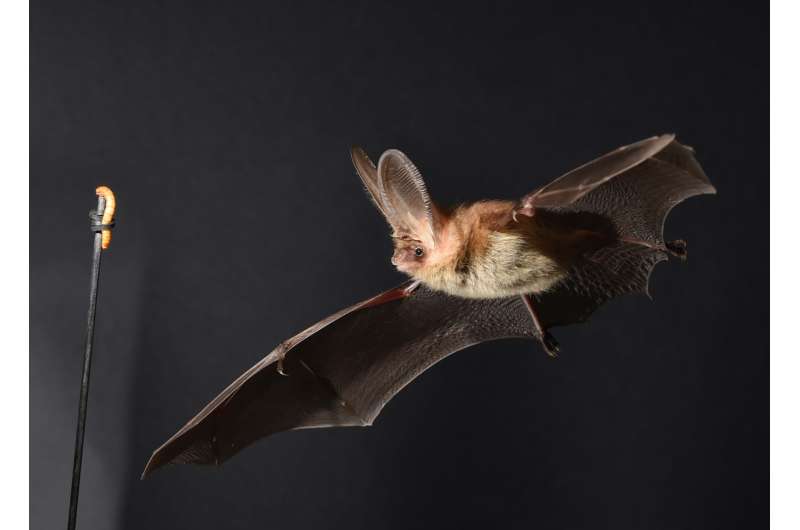Winging it: How do bats out-maneuver their prey?

Bats catch food 'on the wing' without touching the ground, but how do they do it? A new study by Per Henningsson at Lund University, Sweden is the first of its kind to analyse the aerodynamics of bats performing manoeuvers during flight.
"This physically demanding feat requires the bat to pick up prey with high precision, while also coping with winds and air turbulence created by the foliage and branches surrounding them," explains Dr Henningsson. In order to handle these difficult flying conditions, bats must have incredible control over their wings to manoeuver around obstacles and through tight spaces to catch their prey.
By flying Brown long-eared bats in a wind tunnel and allowing them to chase after a tempting prey, Dr Henningsson and the team use a flow visualisation technique called particle image velocimetry (PIV) to analyse how the bat's wings move through the air.
"We let the bats perform a simple lateral manoeuvre in our wind tunnel so that we can study how the animals initiate, move through and terminate the manoeuvres before stabilizing again," says Dr Henningsson.
While these techniques have been used on bats and other flying animals before, this is the first time that the manoeuvring aspects of bat flight have been examined. Understanding how these bats have evolved to master their wing control to such a fine degree. "In particular the insect eating bats have to be very skilled at manoeuvring flight since they need to be able to capture their (sometimes evasive) prey in the air," says Dr Henningsson.
It's not just bats in the spotlight however, Dr Henningsson and his team are also conducting the same experiments with birds and insects in order to compare their ability to manoeuvre: "The wings of the three groups are rather different, so one might expect the aerodynamics to be very different, but we may find some interesting similarities."
Based on their short, broad and membranous wings, Dr Henningsson believes that the Brown long-eared bats are likely to have a high level of aerodynamic control for manoeuvring compared to the other animal groups, but concludes that "surprises should probably be expected!"
Provided by Society for Experimental Biology




















